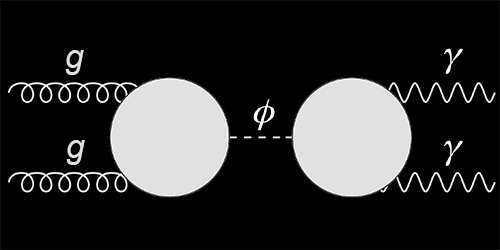Explaining a 750 GeV Bump
Late last year, two collaborations at the LHC reported hints that proton-proton collisions created more photon pairs (diphotons) than expected with energies of about 750 GeV (in the diphoton’s rest frame). Such a “bump” in the diphoton spectrum is very much like the signal that led to the discovery of the Higgs boson. The difference is that no one was expecting another such bump. If confirmed, it would imply the existence of surprising new particles.
This exciting hint has generated many theory papers (see Physical Review Letters’ Editorial: “Theorists React to the CERN 750 GeV Diphoton Data”). Most of the models proposed contain a new 750 GeV boson—6 times heavier than the Higgs boson—plus some other particles, such as new fermions that would couple the new boson to pairs of photons and to pairs of gluons generated by the LHC’s colliding protons.
Now, a quartet of papers, appearing in the same issue of Physical Review Letters, attempt to explain the origin of the 750 GeV signal. Three papers are centered around some new 750 GeV boson: a pion-like boson associated with a new type of strong force (Y. Nakai, R. Sato, and K. Tobioka), a Higgs-like boson that couples to new kinds of fermions (G. Li et al.), or a boson that is the supersymmetric partner of a hypothetical fermion called the goldstino (C. Petersson and R. Torre). The fourth paper (W. S. Cho et al.) explores the possibility that the diphoton excess is not due to a 750 GeV particle at all, but to some even heavier particles that decay via a cascade to lighter particles along with photon pairs of about 750 GeV.
By the fall of 2016, the LHC should have collected enough data to determine whether the hint is a real signal or a statistical fluctuation. If the former, researchers will eagerly delve into deciphering the new physics behind the signal.
This research is published in Physical Review Letters.
–Robert Garisto





